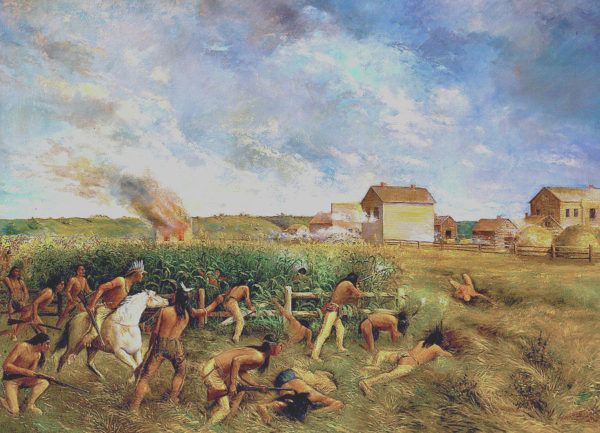Paul wrote here about schools in Northern Virginia dropping the names of Thomas Jefferson and George Mason, now deemed politically incorrect. Here in Minnesota, we are going through something similar, even if it will not be familiar to a national audience. Henry Sibley High School in St. Paul, named after Minnesota’s first governor, has repudiated its heritage and will change its name:
A local school board voted this week to change the name of Henry Sibley High School, which is named after Minnesota’s first governor.
The West St. Paul-Mendota Heights-Eagan Area School Board began the renaming process in early November. The board heard from community members, local historians and the district’s American Indian liaison, who shared the “perspectives she gathered from our American Indian families and students.”
What’s it all about? It has to do with the Sioux uprising of 1862. Beginning with a series of spree killings, it turned into a mass slaughter of white settlers along the Minnesota River. The details were gruesome: most victims were women and children, murdered in ways too horrific to describe. Henry Sibley led the troops that rode to the rescue of the civilians who were being massacred by Sioux warriors.

The American settlers won the war, happily, and in the aftermath 303 Sioux warriors were sentenced to be hanged for crimes of which they were convicted by a hastily-assembled military tribunal. President Lincoln had the trial transcripts sent to him, and he reviewed them personally, most likely in the middle of the night as the Civil War was going badly at the time.
Lincoln applied a strict standard: he would only allow Indians to be punished if there was clear evidence that they committed either murder (not killing an opponent in battle, but murdering a civilian, usually a woman or child) or rape. On that basis, only 38 Sioux were eventually hanged in Mankato, Minnesota. Lincoln gave strict orders that federal troops protect the remaining, vast majority of Indian warriors from the appropriately angry whites.
So Henry Sibley was not as magnanimous as Abraham Lincoln. That may have something to do with the fact that he saw the results of the Sioux massacres, the tortured and decapitated women and the infants nailed to tree trunks.
Sibley was as distinguished as anyone in this part of the country, in his era:
In addition to being Minnesota’s first governor, Sibley was a member of the Board of Regents of the University of Minnesota, a founding member of the Minnesota Historical Society, and a colonel during the U.S.-Dakota War of 1862.
But that cuts no ice with today’s liberals and spineless school administrators, who probably know little or nothing of the actual history of the 1862 war. All they know is, if it is anti-American, they are on board with it.
Years ago, Scott and I went to the Minnesota Historical Society and read the transcripts of the trials of the Sioux warriors. As you can imagine, they were intensely interesting. We wrote an op-ed about the war and the ensuing punishment of Sioux criminals that was published in the Minneapolis Star Tribune. Since then, the idea that the Sioux massacres represent a dark chapter not in Sioux history, but in American and Minnesota history, has become pretty much universal. Ignorance of the past is dangerous.
Notice: All comments are subject to moderation. Our comments are intended to be a forum for civil discourse bearing on the subject under discussion. Commenters who stray beyond the bounds of civility or employ what we deem gratuitous vulgarity in a comment — including, but not limited to, “s***,” “f***,” “a*******,” or one of their many variants — will be banned without further notice in the sole discretion of the site moderator.